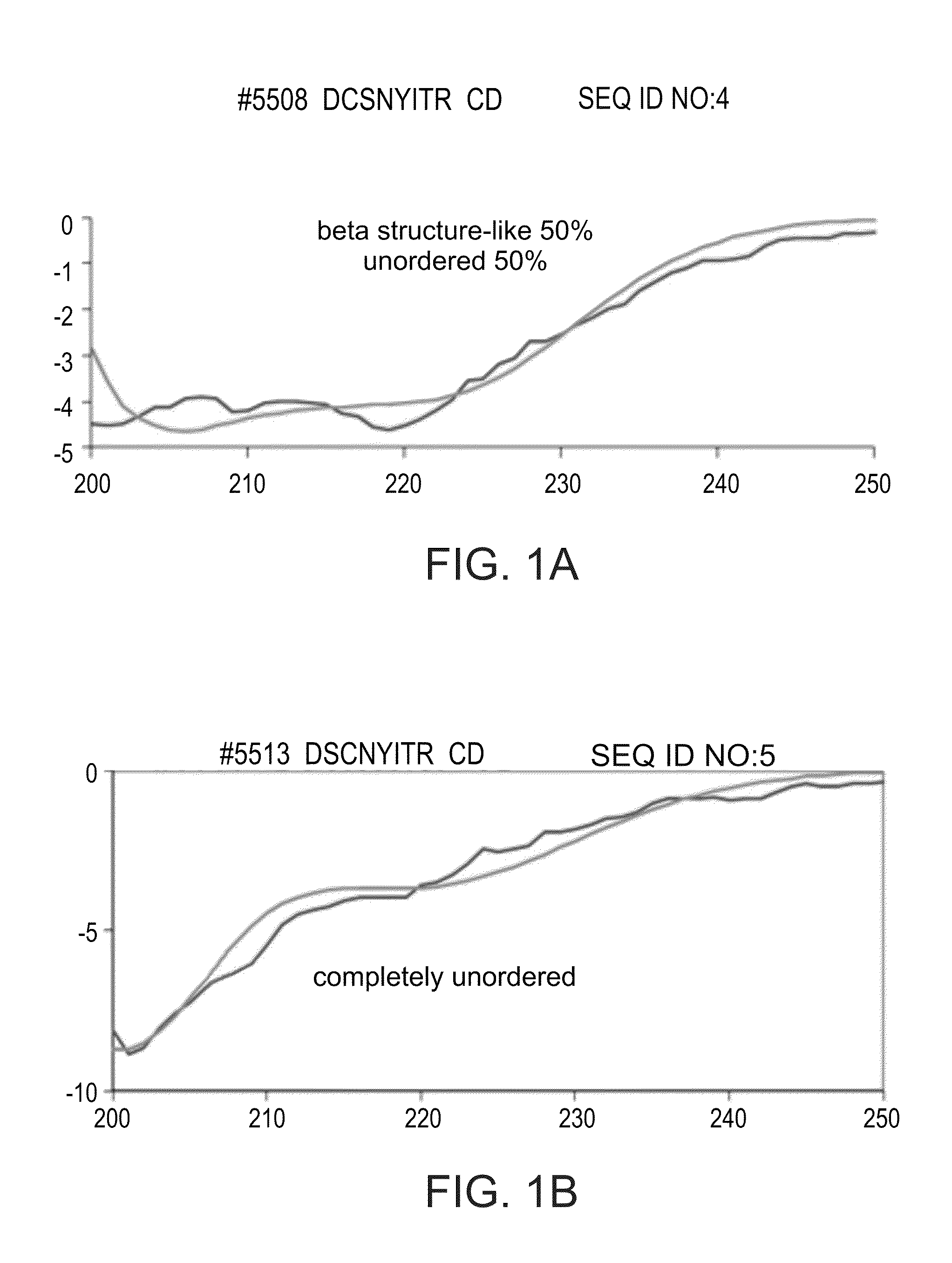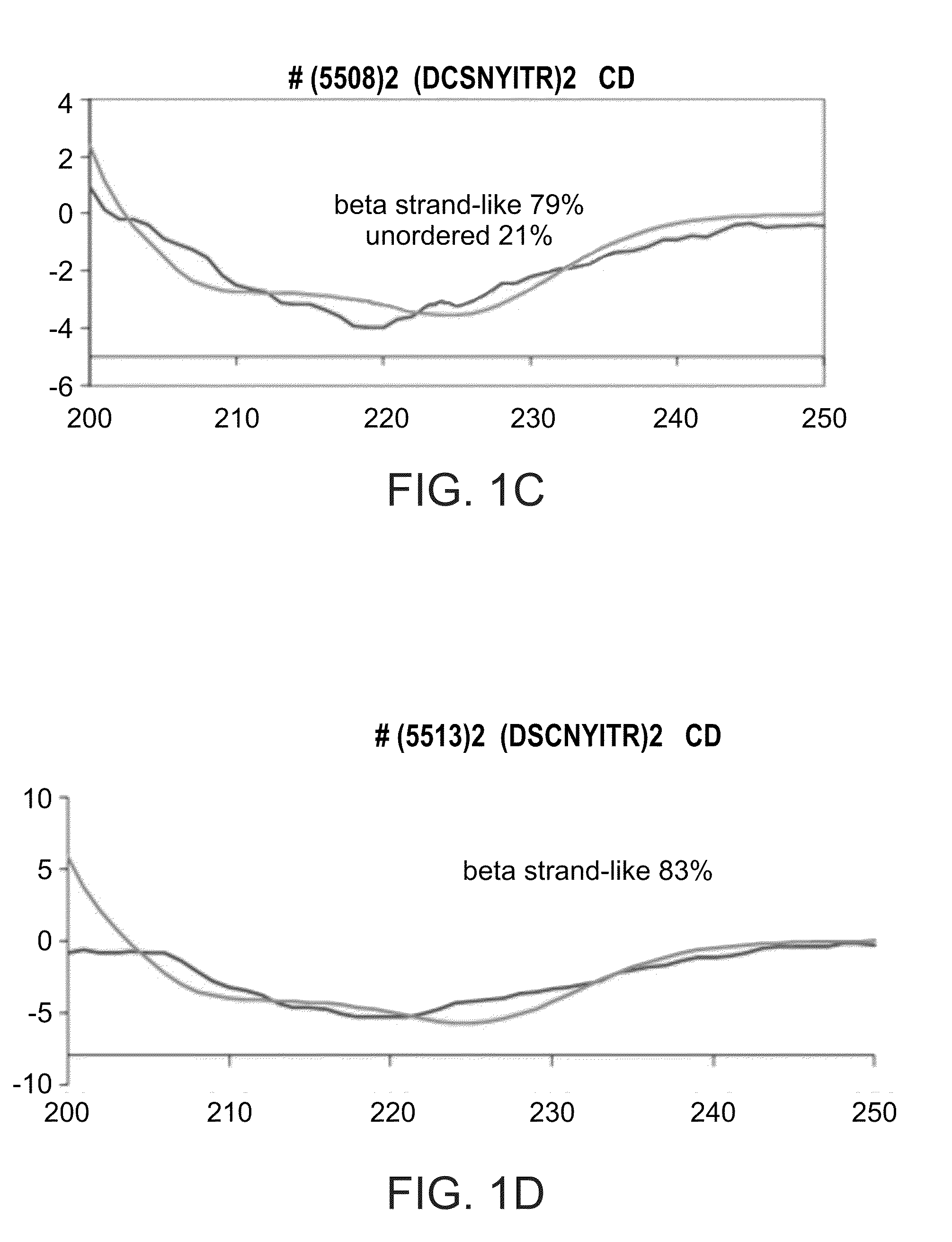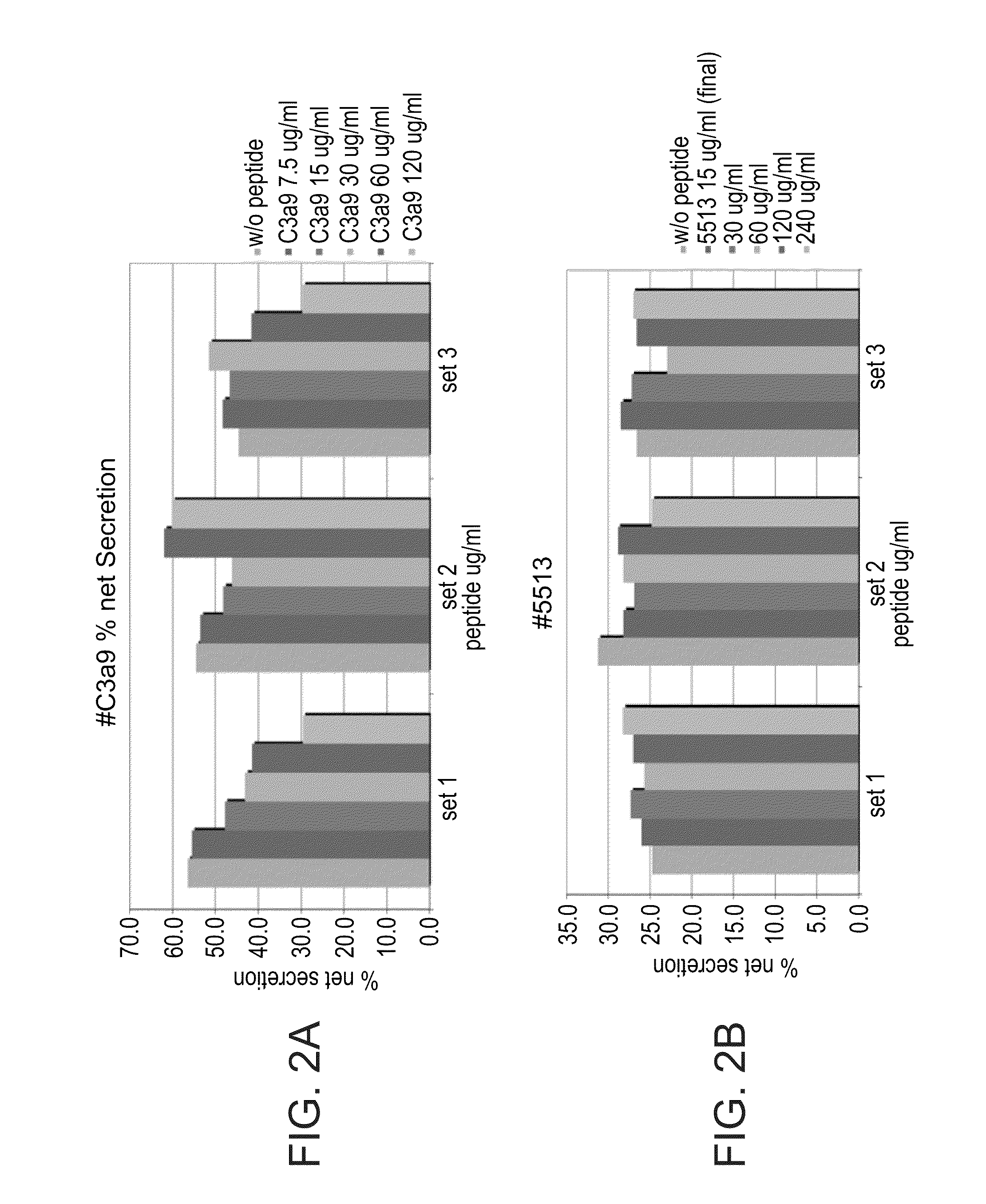COMPLEMENT C3a DERIVED DIMERIC PEPTIDES AND USES THEREOF
a dimeric peptide and c3a technology, applied in the field of dimeric peptides, can solve the problems that the native intact c3a is not suitable as a potential anti-allergic drug, and achieve the effects of improving bioavailability, improving biological activity, and improving water solubility and stability
- Summary
- Abstract
- Description
- Claims
- Application Information
AI Technical Summary
Benefits of technology
Problems solved by technology
Method used
Image
Examples
example 1
Peptide Syntheses and characterization
Peptide Synthesis:
[0300]Peptides were synthesized by the solid phase technique utilizing ‘Boc Chemistry’ (Merrifield et al., Biochem. 14: 1385-1390, 1964). Peptides were dissolved in DMSO and stock solutions at a concentration of 20-25 mg / ml were kept at +4° C. In addition similar stock solutions were also prepared in deionized water. The final concentration of the peptides in the assays ranged from 25 μM to 200 μM.
[0301]The following monomeric peptides were prepared:
[0302]TV5501 (C3a9): DCCNYITR (denoted C3a9) (SEQ ID NO:3)
[0303]TV5508 (Monomer A): DCSNYITR (a modification of C3a9 as described herein, in which the second cysteine is modified by serine) (SEQ ID NO:4)
[0304]TV5513 (Monomer B): DSCNYITR (a modification of C3a9 as described herein, in which the first cysteine is modified by serine) (SEQ ID NO:5)
[0305]To generate dimeric forms of the peptides DSCNYITR and DCSNYITR, peptides were dissolved in DMSO and water at a required concentration...
example 2
Effect of Dimeric Peptides on IgE-Induced Mast Cell Activation Under In Vitro Conditions
Materials and Methods
Secretory Response of Mast Cells:
[0312]Mediator secretion by the rat mucosal mast cells, RBL-2H3-line, in response to stimulation by FcεRI clustering was monitored by measuring the activity of the secreted granular enzyme β-hexosaminidase. To this end, a monoclonal DNP-specific murine IgE-class antibody (rat clone 95.3, 1:103 dilution) was added to 15×106 cells in 10 ml DMEM and incubated in 96 well plates (100 μl suspension / well) for 2 hours. The cell monolayers were then washed three times with Tyrode's buffer (137 mM NaCl, 2.7 mM KCl, 1.8 mM CaCl2, 0.5 mM MgCl2, 0.4 mM NaH2PO4, 5.6 mM glucose, 10 mM Hepes, 0.1% BSA, pH 7.4.) and stimulated with BSA derivatized by an average of 11 DNP groups per molecule (DNP11-BSA) serving as an antigen.
[0313]To study the effect of the peptides on antigen-induced response, RBL-2H3 cells were pre-incubated with various concentrations of the...
example 3
Effect of Dimeric Peptides on Passive Systemic Anaphylaxis
Materials and Methods
[0319]Passive Systemic Anaphylaxis:
[0320]This assay was performed as reported by J. N. Wu et al., (Journal of Immunology, 2004, 172: 6768-6774). In brief, anesthetized C57 Black mice (4-5 / group) were injected with the monoclonal IgE class DNP specific antibody (A2 IgE) by retroorbital injection. A day later, a peptide solution was dripped into the nose of the mice (20 μl of a 500 μm solution). Ten minutes later, animals were challenged with antigen (DNP-BSA11) and 5 minutes later blood was taken for determination of histamine concentration by the Immunotech Histamine-kit.
Results
[0321]FIGS. 4 and 7 show the extent of inhibition of increase in blood histamine levels in the peptide-pretreated mice following antigen-challenge. As shown in FIGS. 4 and 7 monomeric peptides as well as dimeric peptides showed similar inhibition of histamine release, although dimeric peptide 5513 was found to be more effective.
PUM
| Property | Measurement | Unit |
|---|---|---|
| peptide composition | aaaaa | aaaaa |
| pharmaceutical composition | aaaaa | aaaaa |
| water solubility | aaaaa | aaaaa |
Abstract
Description
Claims
Application Information
 Login to View More
Login to View More - R&D
- Intellectual Property
- Life Sciences
- Materials
- Tech Scout
- Unparalleled Data Quality
- Higher Quality Content
- 60% Fewer Hallucinations
Browse by: Latest US Patents, China's latest patents, Technical Efficacy Thesaurus, Application Domain, Technology Topic, Popular Technical Reports.
© 2025 PatSnap. All rights reserved.Legal|Privacy policy|Modern Slavery Act Transparency Statement|Sitemap|About US| Contact US: help@patsnap.com



